If you have not, read part 1 first, as this will give you a primer on how I cultured wild lactobacillus. WARNING: another long-winded post on things that you probably don’t care about unless you are a nerd like me!

After nearly a week of letting my lactobacillus starter sit outside, the pellicle inside was huge and it smelled like lemon yogurt. I finally brewed the beer. The plan was for this to be a sour saison. I added some rye malt as well, to ensure that there’s a more complex malt character and so that this doesn’t turn too thin and weird if the lactobacillus I cultured sucks.
At this point, you have a couple of options on how you can add the lactobacillus: (more…)
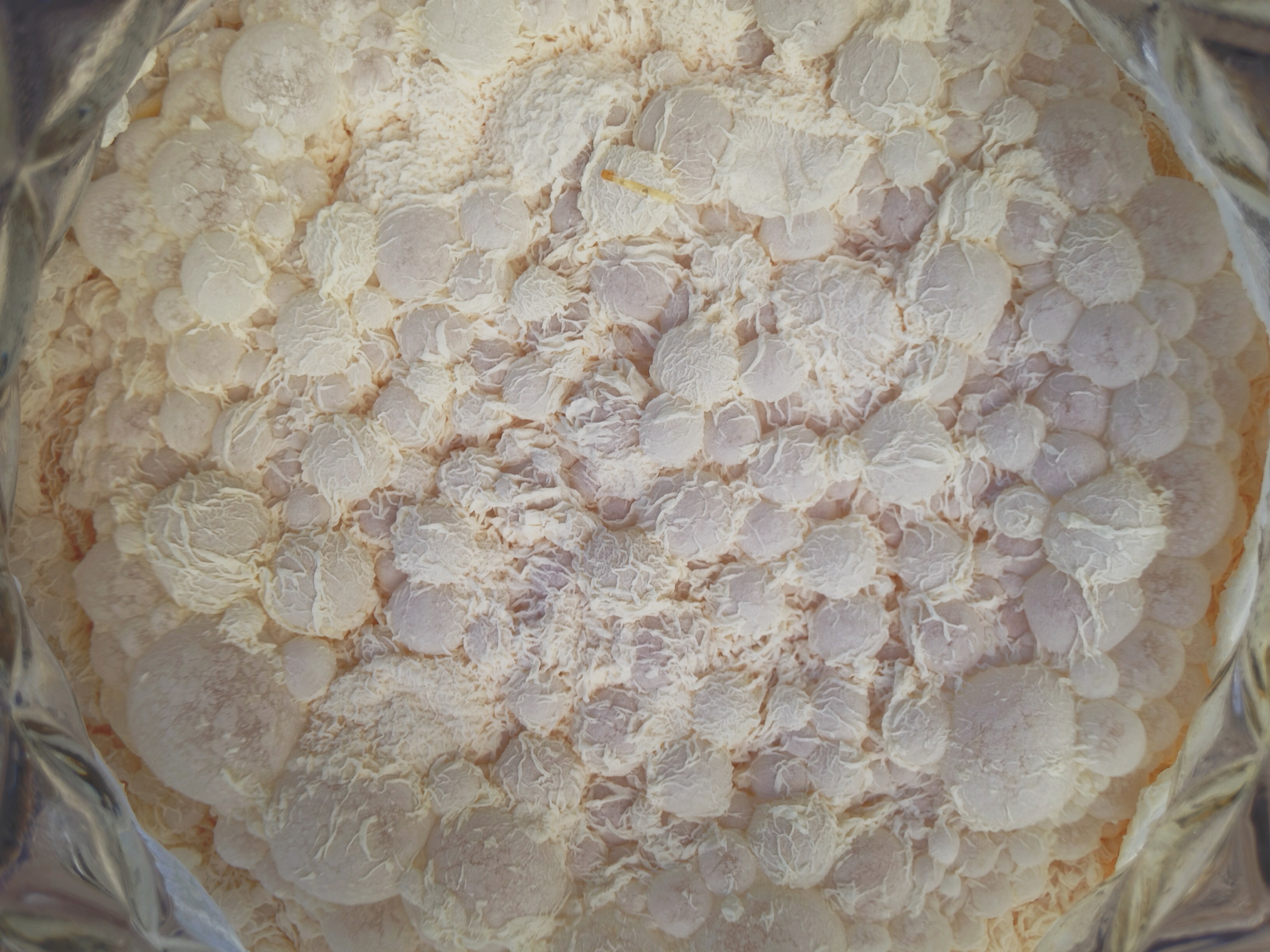
If you’re anything like me, then when you do something for the first time, you like to make it as complicated as possible. Case in point: making a sour beer.
Sour beers get sour by adding bacteria that converts sugars into various acids. Lactic acid is most common in sour beers, providing a clean, lemony taste. However other acids that could be found include malic acid; which tastes like sour apples, acetic acid; which is basically vinegar, and butyric acid; which is similar in aroma to bile. The bacterias and wild yeasts that create these acids (namely lactobacillus, pediococcus, sherry flor, and brettanomyces) can very easily be purchased by a number of yeast labs. But I thought it would be more fun to culture my own lactobacillus.
WARNING: long-winded, microbiology filled post!
Lactobacillus (henceforth known by it’s more common street name: lacto) can be found virtually everywhere, including inside the human body. Lacto is also what’s used to sour milk into yogurt. In fact, I’ve read that you can even use yogurt as a lacto starter to add directly to beer. I decided instead to use a more practical source: malted barley. (more…)
We started using an enzyme in all of our beers before the end of last year and are now prepared to announce a significant breakthrough for gluten intolerant people. Because we love you and want you all to be happy, our beers are now SIGNIFICANTLY gluten reduced. Legally, we can never claim our beers to be gluten free because any product, according to the FDA, that once contained gluten can never be claimed as gluten free. However, the FDA threshold for gluten free is 20 ppm; our beers should fall in around the 10 ppm range. Celiac sufferers need not abstain any longer. Relax and have a beer.
This is huge for those with gluten intolerance. Searching for gluten free beers is not easy, and many of the beers are lackluster (though I personally prefer either Dogfish Head’s Tweason’ale, or Las Vegas locals, Joseph James Brewing Company’s Fox Tail; which happens to be the first canned gluten free beer). Alpine is known for having incredible beers, and having all of them available to those who are gluten intolerant awesome. Click the above quote for the remainder of the press release.
I believe that the enzyme that Alpine is using is likely Clarity Ferm, made by White Labs. This enzyme was released last year, and its primary purpose is to reduce chill haze in a beer. As an added bonus, it reduces the gluten content in a beer. When I first heard of this enzyme a year ago, I wondered if/why a brewery wouldn’t just add it to all of their beers. Chill haze is something that no brewer wants to have, and why wouldn’t they want to make their beers available to those with gluten intolerance? If you clicked the link over to White Labs, you would’ve noticed that the TTB has interim guidelines for beers made with Clarity Ferm in what is allowed to be on the label. As Alpine mentioned in their press release, the term “gluten free” is not allowed since it was originally produced with gluten. It will be interesting to see if the use of this enzyme expands further.
 A properly aged beer is something that cannot be recreated without the hard work of actually being patient and waiting it out. It is incredible to taste the differences in a beer even just a year later. So, without further ado…
A properly aged beer is something that cannot be recreated without the hard work of actually being patient and waiting it out. It is incredible to taste the differences in a beer even just a year later. So, without further ado…
First of all, there are no rules. There are only suggestions, or even just hypotheses. The fact is, the exact same chemical changes happen within every bottle of beer as time progresses. Depending on some specific factors (alcohol content, hop content, beer style, etc) this chemical change can be called spoilage in one beer, or maturation in another. This is why guidelines exist for aging beers. Certain guidelines are generally true for most beers, some are not. The real truth, however, is that we all taste and perceive flavor differently. This is the biggest reason why aging rules vary so much. The effects of aging a beer are nearly always the same, but whether the effects are something that you want is another factor. That said, here are some things to consider: (more…)
2013 was a great year for us and we want to thank you all for continuing to read and share our articles, tagging your photos #hookedonhops, and saying hello to us when we are out at a bar or festival. We appreciate all of it, and we are excited for what’s to come in 2014!
In the meantime, I have compiled the articles and topics that were the most popular over the past year. Enjoy! (more…)
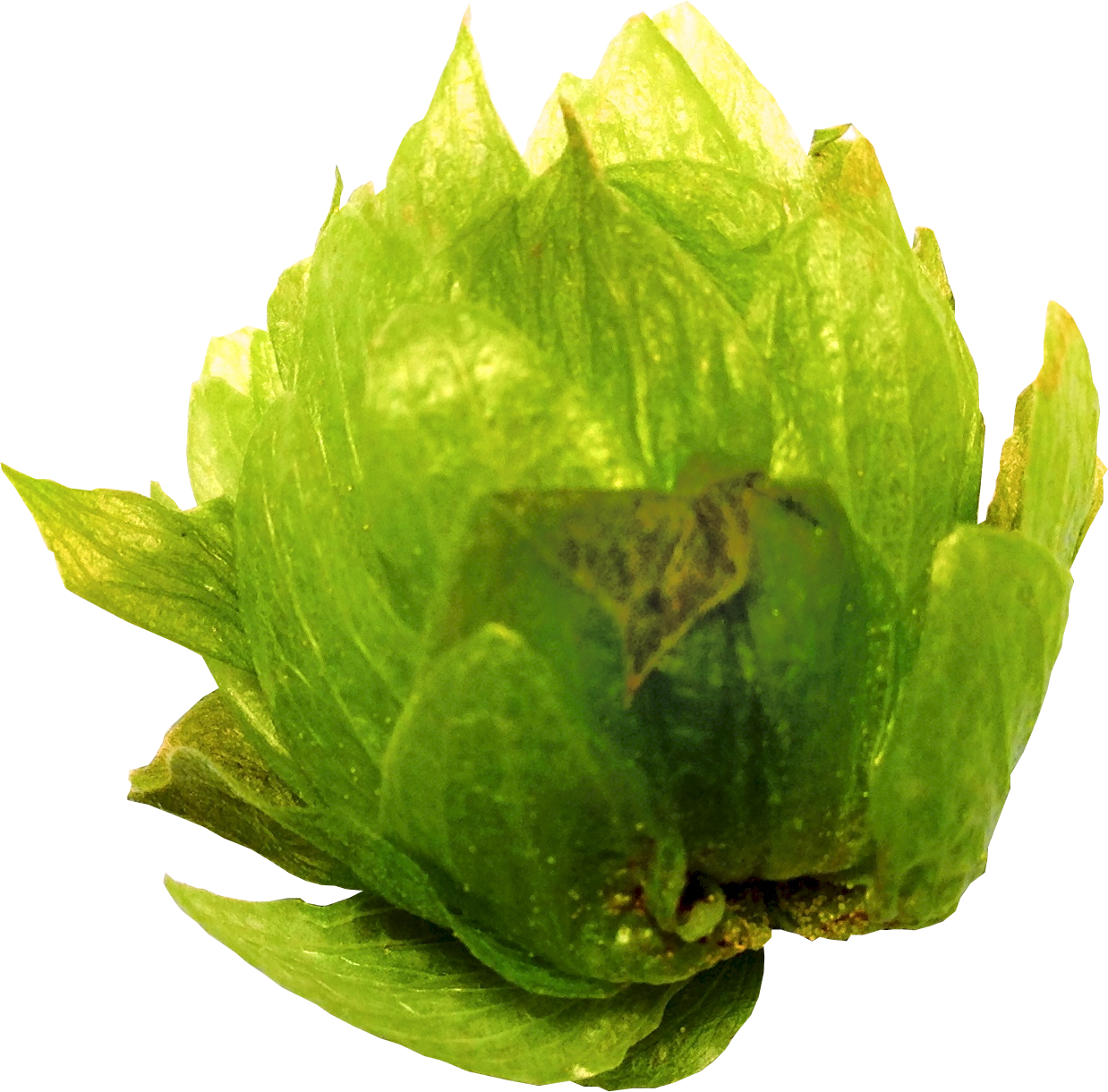
As craft beer becomes more prevalent, so does its most popular ingredient, the hop. Many people recognize the hop as the truly differential factor between craft beer and the more common light American lagers. But what does it mean to describe a beer as ‘hoppy?’ Hoppy is often used as a synonym for the word ‘bitter,’ but there are plenty of beers that use loads of hops and don’t taste the least bit bitter. So, does ‘hoppy’ even mean anything at all? First, it’s important to know what the purpose of hops are in a beer.
(more…)
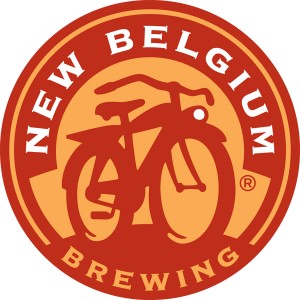
While Lauren Salazar was in Las Vegas for several of the New Belgium events in town, I was given a chance to sit down with her and discuss New Belgium’s creative process and some of their upcoming projects.
La Folie has become one of my favorite beers and being able to sit down and talk with the blender who makes La Folie was awesome. I’m really looking forward to all of the new beers that we discussed, as well as New Belgium’s expansion.
Hooked on Hops: You’re known for being the wood cellar manager at New Belgium and blending sour beers, like La Folie. What are some non-sour beers that you enjoy drinking?
Lauren Salazar: I’m a crazy stout fan! Anything dark, malty, huge; that’s my thing. Old Rasputin, Big Bad Baptist, I love anything huge and big. (more…)
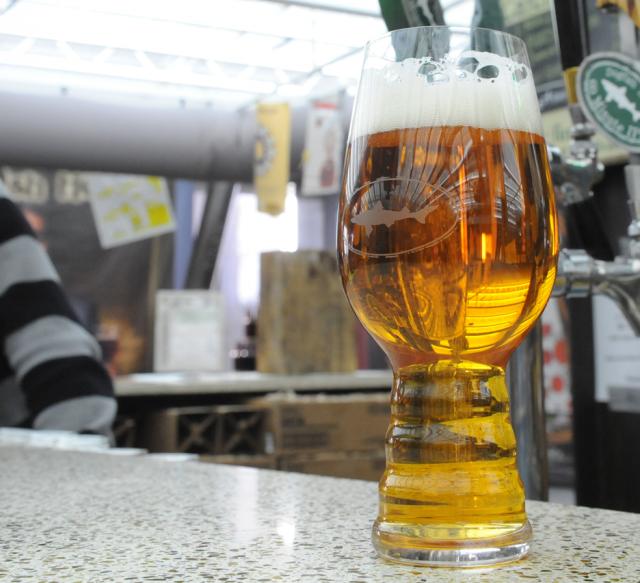
Calagione, his wife, Mariah, and Sierra Nevada’s father-son team of Ken and Brian Grossman worked hand-in-hand with Spiegelau to bring this glass to life. Through a series of design and tasting sessions, the team created a glass with:
Any thoughts on this? I’ve personally never been a fan of top heavy glasses (like the Sam Adam’s glasses) but I do kinda like the look of this one. Click above to view Dogfish Head’s full announcement.
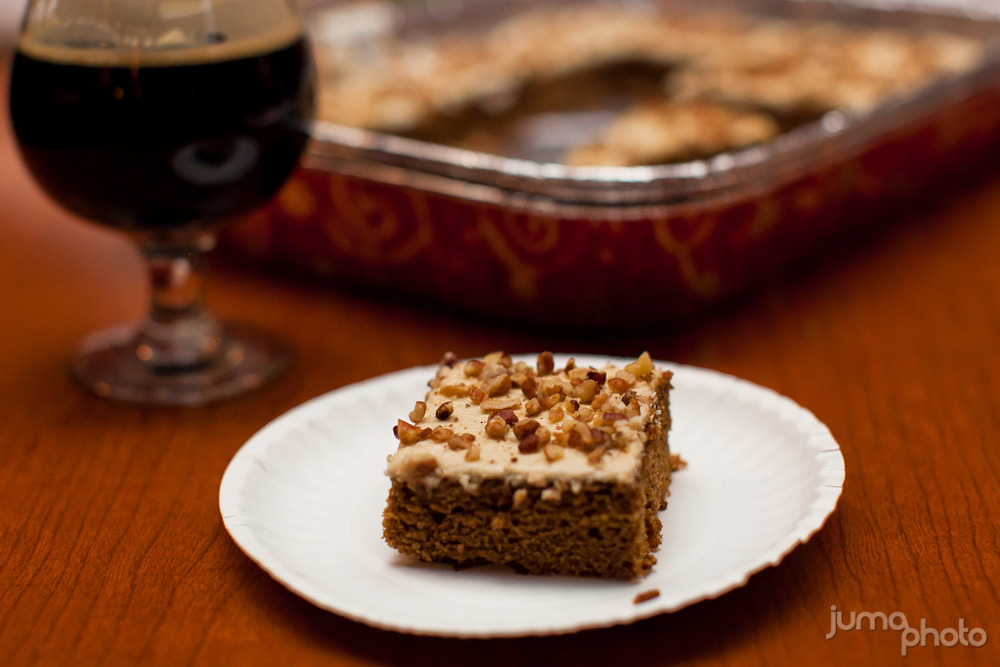 One week into 2013 and I finally took the time to look back at 2012. I thought I’d reshare several of the most read posts over the past year. I hope you all enjoy this look back!
One week into 2013 and I finally took the time to look back at 2012. I thought I’d reshare several of the most read posts over the past year. I hope you all enjoy this look back!
#drinklocal
An ode to supporting all the businesses here in Las Vegas that promote craft beer across the valley!
The Great Las Vegas Festival of Beer
A recap of the 2nd annual Vegas Festival of Beer. Worth reading up considering the 3rd Festival of Beer is coming up soon!
Hooked on Hops at Tenaya Creek
Last year we held a special food pairing at Tenaya Creek with their Imperial Stout and Goran’s gingerbread stout cake!
An Updated Guide to Aging Beers
Worth reading through a few times if you have any interesting in understanding how to age beers.
Freshness Matters
Worth reading through a few times to understand the importance of drinking beer as fresh as possible.
Kind of contradicts the aging article huh? Nope. Read both and learn why!
Bacon and IPA Spaghetti
Another one of Goran’s food recipes featuring beer!
The Las Vegas Downtown Brew Festival
After the success of the Great Las Vegas Festival of Beer, 2012 saw the premiere of the Downtown Brew Festival!
What The Craft Beer Scene Can Learn From The Metal Scene
Last year saw craft beer fans searching for the most obscure breweries possible, while calling out the pioneers as overrated. Armando shared his thoughts here.
Danny is a Ninja
Right at the tail end of the year, we launched a video mini-series reviewing some beers. The first iteration is New Belgium’s La Folie. We have since added Dogfish Head 120 Minute IPA, and Stone Vertical Epic 12.12.12
If you read my post on glassware, then you should be aware of how important your sense of smell is in affecting your flavor perception. Going along the same lines of of proper tasting techniques, I thought I’d expand a bit further and talk about the flavors that you don’t want to taste.
Simply put, off flavors are the wrong flavors, the bad flavors, the flavors that aren’t supposed to be there. Why would anyone want to be able to recognize these flavors? If you are a brewer, it is important to know when something is negatively impacting the flavor of your beer. If you serve beer, it is important to know that you are serving your patrons the best quality beer, free from imperfections, to give them the best possible experience. What about all the other craft beer drinkers? Should they go through some sort of off flavor training? On the one hand, it is highly beneficial to be able to tell when the your beer in your fridge isn’t fresh anymore and should be tossed, or whether something is wrong with your beer when you go out to bars. On the other hand, once you learn to recognize off flavors, there’s no unlearning what you know. You’ll see (taste?) everything in a whole new light. Certain flavors will just stick out to you, but stay hidden to anyone who hasn’t gone through off flavor training.
I won’t go into too much detail about specific off flavors. Instead I want to focus on some guidelines of the two common places that off flavors become produced: During fermentation, and storage/serving.
During fermentation:
Most off flavors are actually normal byproducts of fermentation. If you go to White Labs’ website for example, they will give you the specific amounts of different off flavors that their yeast produce. Depending on the style, some of these off flavors are expected, and even desired. British yeasts will typically have more diacetyl than other yeast strains, and lager yeasts usually produces more acetaldehyde than other yeast strains. Improper techniques can exasperate these flavors far more than they should be, and they will then become detrimental to the beer.
There are other off flavors that can be produced durning production by other sources besides just the yeast. Again, these can be controlled by proper brewing techniques. These are out of a customer’s control, and thankfully, usually not noticed in commercial level brewing, so I won’t detail any of these specific flavors. Homebrewers however, would greatly benefit from studying these further. There are links at the end for further study.
Improper Storage/Serving:
All of the off flavors that can be produced during this stage can be prevented. Anyone who serves beer should be well aware of how to prevent these, as well as anyone who cares about drinking beer the way it’s supposed to be enjoyed.
The most common off flavor in this regard would be oxidation. Oxidation occurs when beer gets in contact with oxygen. Despite being sealed, beer bottles are not air tight and over time, will slowly get more and more oxidized. This is why it’s best to always drink beer fresh. Heat will increase the speed at which oxidation occurs, which is why it is best that beer stays refrigerated as much as possible.
Oxidized beers will develop a variety of different flavors, with papery/cardboard like being the most common. If you don’t understand what I’m talking about, suck on a wet piece of a cardboard box and you’ll get the idea. A little vinous or sherry like flavors can also develop. While these flavors are ideal in a barley wine (explained further here), in average alcohol strength beers, these flavors make the beer a bit unpleasant.
Keep beer out of sunlight, especially if it is a hoppy beer. Fun game: pour an IPA into a clear glass and leave it out in the sun for twenty minutes then drink it. Yeah, that’s what a skunked beer tastes like. The sunlight will literally take elements of the hop compounds in a beer, and convert them into essentially the same compound that gives skunk spray it’s wonderful aroma.
Lastly, if you serve beer from a tap, CLEAN YOUR TAP LINES! Beer has residual sugars and various trace minerals. Failure to clean tap lines means these sugars and minerals begin to coat the interior of the beer line. Once it starts to build up, it begins to harvest bacterias that alter the flavor of the beer. Typically, the flavor will start to become slightly acidic, or sour, and simultaneously becomes a bit buttery. The buttery flavor is from a compound called diacetyl, the souring is from a bacteria known as Pediococcus. To prevent these types of off flavors, it is important to clean your tap lines at least every two weeks! Only flushing your lines with water does not count as cleaning them. Sadly, to many bars around town, this standard sounds over dramatic. Trust me, there is a difference in flavor and aroma when you have a beer from a bar that cleans their tap lines regularly, and one that doesn’t.
For more information on off flavors, this guide from MoreBeer! is very helpful. Otherwise, feel free to ask!






